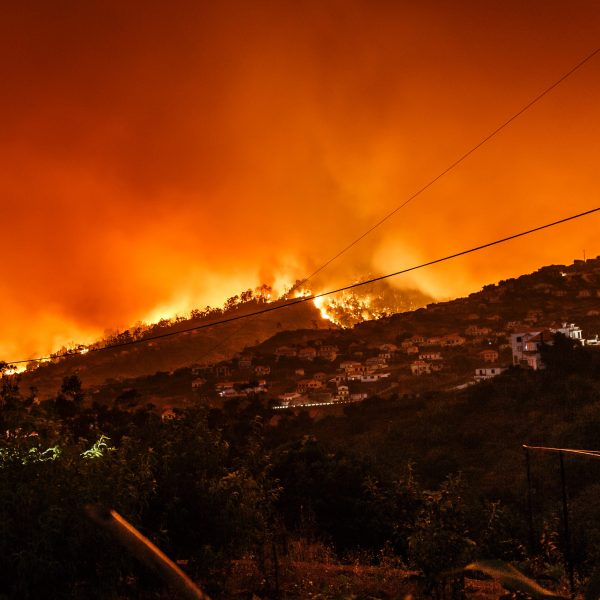Canadian research could support Australian children during bushfire season

A new University of Alberta research project could support children attending Australian early childhood education and care (ECEC) settings during bushfire season.
A set of recommendations for outdoor and indoor air quality monitoring has been drawn up for Alberta’s child-care centres, through a collaboration between two experts from the University, who wanted to provide information to support ECEC settings to promote health and protect children from poor quality air through accessible and actionable ideas, Professor Amina Hussein said.
“Helping daycares and parents minimize the risk of exposure to unhealthy levels of chemicals in the air is preventive health at its best,” Professor Anne Hicks added.
Babies and children are more vulnerable than adults to air pollution and wildfire smoke, she added, saying they tend to be more active than adults, and with their higher breathing rate and small body size, they face more exposure per kilogram of body weight than an adult.
Poor-quality air also affects their growth and development, she continued.
Core recommendations
The recommendations include several policy suggestions for ECEC services, including expanding their emergency response plans to include smoke and extreme heat events.
Providing cool, clean environments for children could mean evacuating to a community centre or other public spaces with air conditioning if the ECEC service is adversely impacted by heat or smoke, the researchers advise.
“Extreme heat and poor air quality are emergencies. If a daycare’s system is overwhelmed and unable to provide sufficient air conditioning or air cleaning, for example in a power outage, there should be an evacuation plan, just like there would be for a fire,” Professor Hicks says.
To keep air clean inside ECEC services, the recommendations also suggest considering the use of indoor air quality monitors, updating ventilation systems and, if necessary, using air cleaners with HEPA or equivalent filtration during wildfire smoke events.
“If it’s too hot or smoky outdoors, children need a safe space inside, so indoor air has to be healthy,” Professor Hicks notes. Monitoring and improving the quality of indoor air is important beyond fire season, she adds, noting that everyday events like idling vehicles in dropoff zones can affect air quality inside buildings as well as outdoors.
Staff,she continued, should also be prepared to spot signs of heat and smoke-related medical distress in children, know when to seek medical help and ensure youngsters with high-risk conditions like asthma have their medications at hand.
“These measures give providers the ability to intervene early and minimize the risk of more serious problems.”
To form their recommendations, the researchers consulted with local services and drew on a wide range of scientific data and studies about the health risks of air pollution, including the risk from fine particulate matter, a major component of wildfire smoke.
Fine particulate matter is tiny enough to enter the lungs — and very fine particulate matter can enter the bloodstream — causing irritation of the eyes, nose and throat, mild cough, wheezing and headaches. At higher levels, the matter can cause more frequent and serious respiratory problems in children, such as asthma flare-ups and a higher risk that viral infections will lead to bronchiolitis.
Serious health risks
Along with high-risk days, prolonged exposure — even to moderate levels of air pollution — can also pose serious health risks, Professor Hicks added.
“It is important for children and families to take air pollution into consideration with their day-to-day activities,” she said.
The researchers’ recommendations lay out steps for assessing the risk of outdoor play, by obtaining local information about air quality immediately before going outside, and throughout the day.
Rather than relying solely on data, the pair suggest ECEC services can also consider investing in air monitors, known as microsensors, outdoors in their own play areas, or use publicly available data from nearby sensors, as an additional source of information.
Microsensors are compact, relatively affordable devices that specifically detect small particulate matter in the air. They provide localized readings of particulate matter.
“Using both methods together gives a more detailed assessment of nearby air pollution in real time, increasing the opportunity for child-care centres to make informed decisions about being outdoors,” Professor Hussein notes.
The pair plan to continue researching the use of microsensors with goals including understanding indoor air quality in ECEC settings.
“With things like vehicle idling and cooking, we want to find out which interventions actually improve it,” Professor Hussein said.
The recommendations Hussein and Hicks compiled will help ECEC staff assess the health risk to children during events such as wildfires (known as bushfires in Australia), when air quality is poor.
Popular

Workforce
Quality
Research
When did it start to go wrong?
2025-12-18 08:00:46
by Fiona Alston

Economics
Policy
Quality
Provider
Research
Is your service ready? Key updates to Queensland kindergarten funding in 2026
2025-12-17 07:00:15
by Fiona Alston

Quality
Workforce
Practice
Research
Let’s not lose the word 'Children'
2025-12-18 07:45:13
by Fiona Alston















